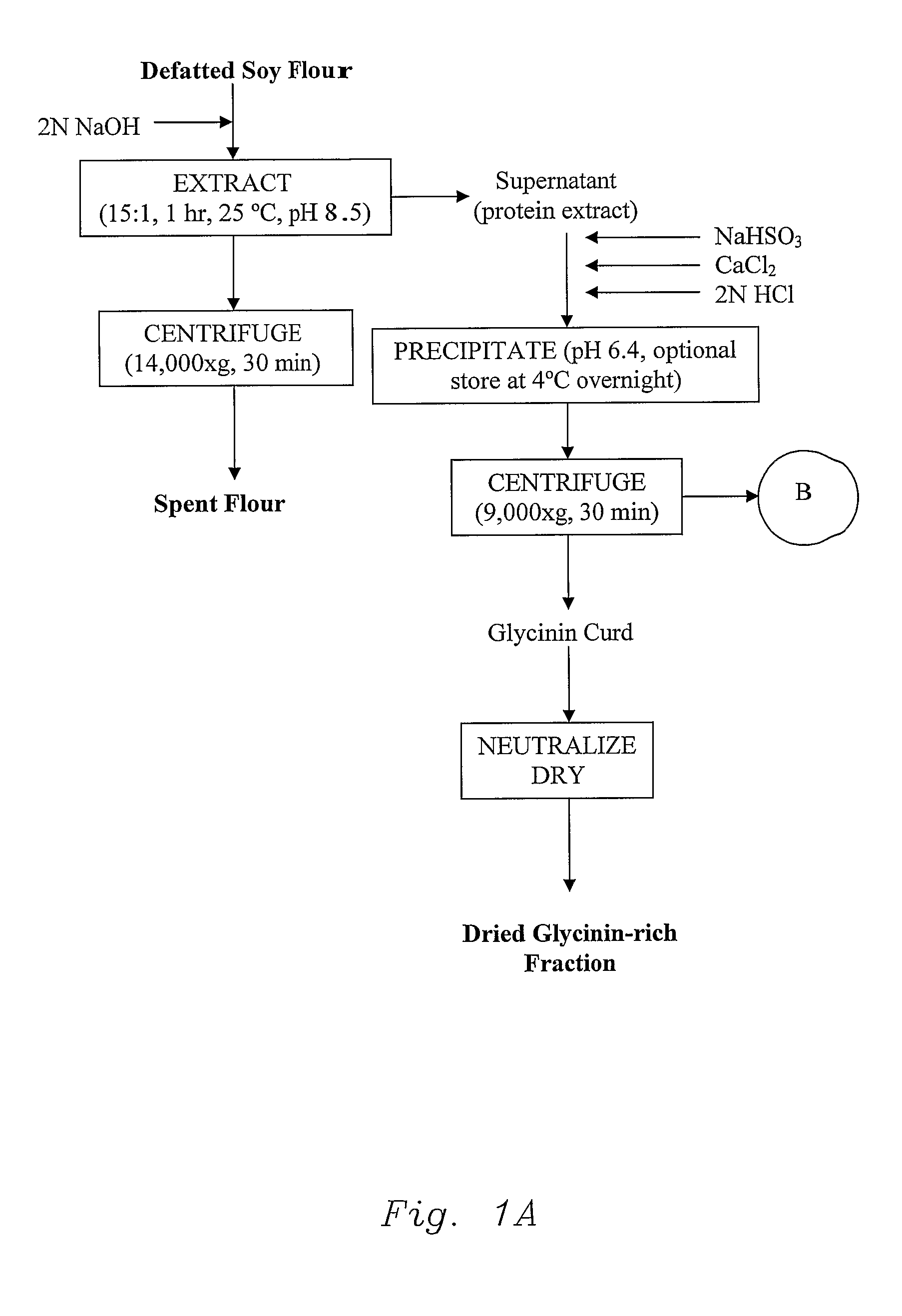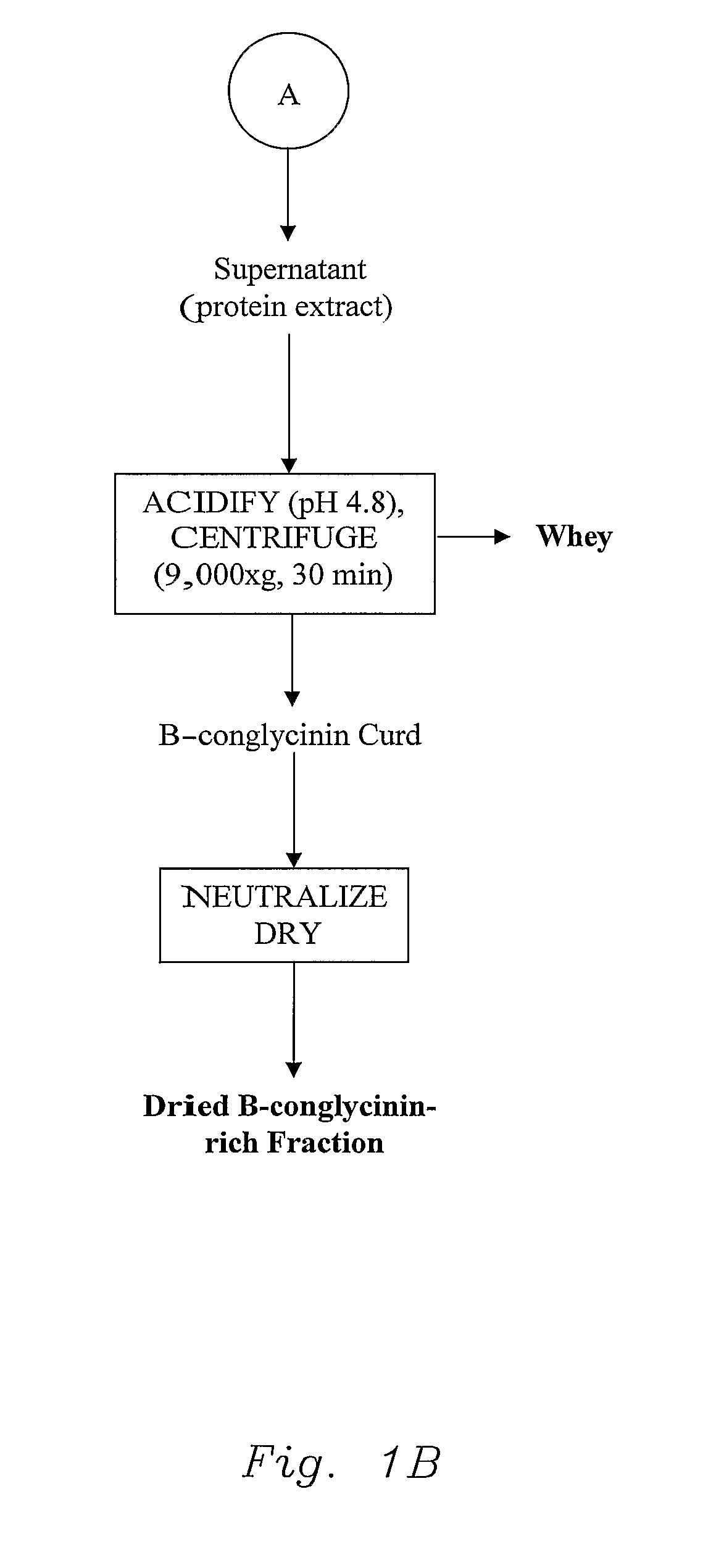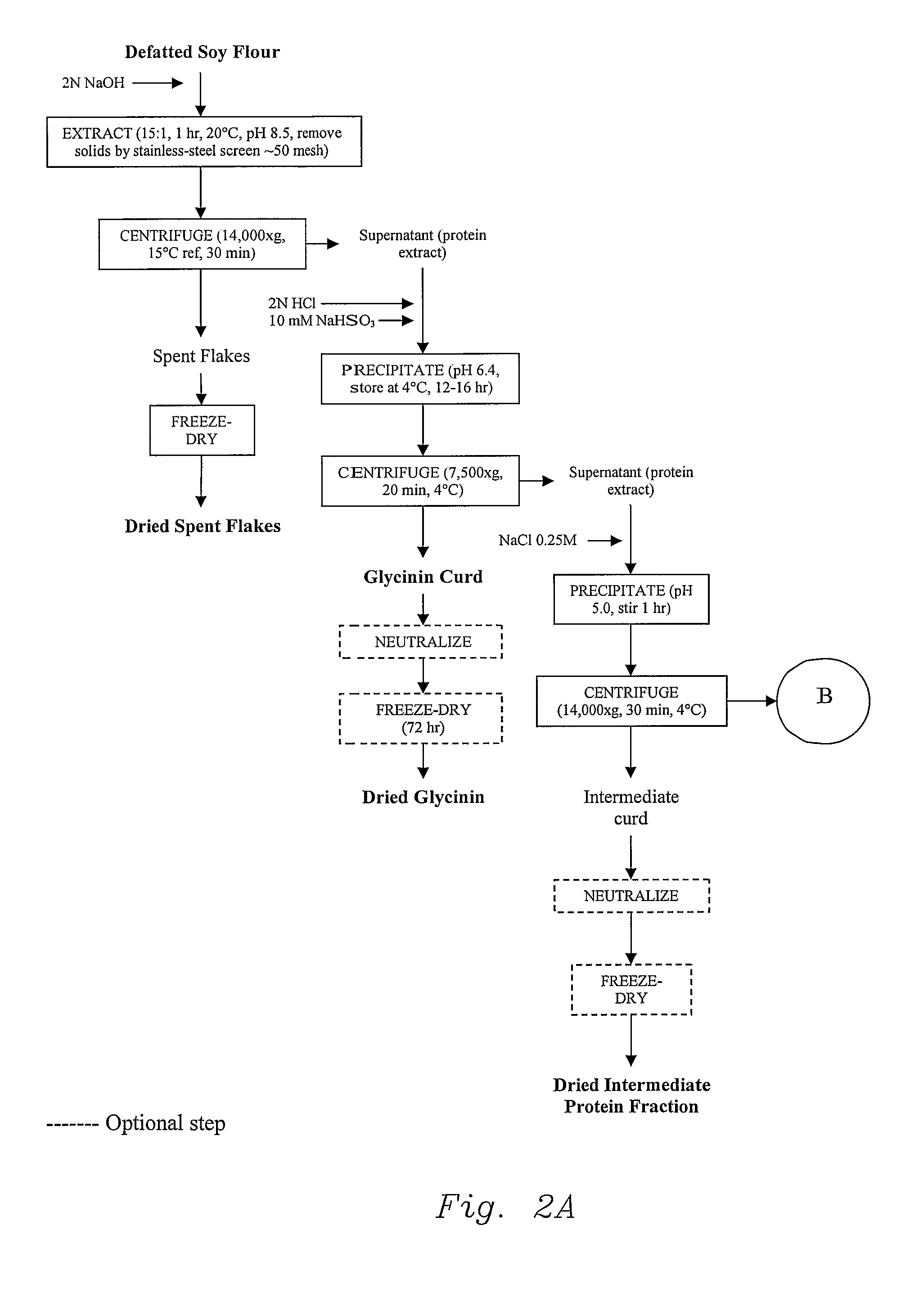Vegetable protein fractionization process and compositions
a vegetable protein and fractionation process technology, applied in the field of soybean, can solve the problems of complex laboratory procedures developed to fractionate vegetable proteins from each other, inability to practically apply commercial scale production techniques, and inability to obtain individual proteins or enriched fractions thereof at competitive costs, so as to avoid managing large volumes of liquid, improve the content of isoflavone, and the effect of convenient and convenient us
- Summary
- Abstract
- Description
- Claims
- Application Information
AI Technical Summary
Benefits of technology
Problems solved by technology
Method used
Image
Examples
example 1
[0067]The process of the invention was carried out in duplicate. Means of solids yields, protein yields and purity data are reported in Tables 1, 2 and 3, respectively.
[0068]All processes started from the same material, defatted soybean flour from IA 2020 variety, 1999 harvest, and defatted in our pilot plant in January 2000. The meal had a PDI of 93.8. The following flow charts are provided: the method of the invention (FIG. 1), control procedure (Modified Nagano, FIG. 2), and traditional soybean protein isolate procedure (FIG. 3).
[0069]All processes had the same starting step, the meal was extracted with de-ionized water at flour-to-water ratio of 1:15; the pH was adjusted to 8.5. The resulting slurry was stirred at 25° C., and after 1 hour the slurry was centrifuged at 14,000×g and 25° C. for 30 minutes to separate the spent flour (largely fiber) from the protein extract. The resulting protein extract, comprising 78.6% of the protein originally present in the flour, was divided i...
example 2
[0107]Starting material: Air-desolventized, hexane-defatted white flakes (IA 2020 variety, 1999 harvest) were produced in the pilot plant of the Center for Crops Utilization Research, Iowa State University. The defatted flakes were milled with a Krups grinder achieving 100% of the material passing through a 50-mesh screen. The protein content of the flour was 57.3% on a dry weight basis, protein PDI (Protein Dispersibility Index) of the flour was 93.8 as determined by Silliker Laboratories (Minnetonka, Minn.).
[0108]Soy protein fractionation (Wu procedure, prior method): The soy protein fractionation procedure utilized as the control in this study is one reported by Wu and others (1999) and is a modification of Nagano and others (1992). About 200 g of defatted soy flour was extracted with de-ionized water at 15:1 water-to-flour ratio, the pH was adjusted to 8.5 with 2N NaOH, and the resulting slurry was stirred for 1 hour. After centrifuging at 14,300×g for 30 minutes at 15° C., the ...
example 3
[0124]Materials: Samples were prepared from air-desolventized, hexane-defatted white flakes (from IA2020 variety, 1999 harvest) produced in the pilot plant of the Center for Crops Utilization Research, Iowa State University. These flakes had 57.3% protein, and 1922 μg / g total isoflavones as determined in our laboratory and 93.8 protein dispersibility index (PDI) as determined by Silliker Laboratories (Minnetonka, Minn.). The flakes were milled until 100% of the material obtained passed through a 50-mesh screen by using a Krups grinder.
[0125]Modified Nagano's (Wu) soy protein fractionation procedure: The soy protein fractionation procedure utilized the same control as is described in the previous example.
[0126]New simplified soy protein fractionation procedure: About 100 g of defatted soy flour was extracted with de-ionized water at 15:1 water-to-flour ratio, the pH was adjusted to 8.5 with 2N NaOH, and the resulting slurry was stirred for 1 hour. After centrifuging at 14,300×g and 1...
PUM
| Property | Measurement | Unit |
|---|---|---|
| molecular weight | aaaaa | aaaaa |
| molecular weight | aaaaa | aaaaa |
| molecular weight | aaaaa | aaaaa |
Abstract
Description
Claims
Application Information
 Login to View More
Login to View More - R&D
- Intellectual Property
- Life Sciences
- Materials
- Tech Scout
- Unparalleled Data Quality
- Higher Quality Content
- 60% Fewer Hallucinations
Browse by: Latest US Patents, China's latest patents, Technical Efficacy Thesaurus, Application Domain, Technology Topic, Popular Technical Reports.
© 2025 PatSnap. All rights reserved.Legal|Privacy policy|Modern Slavery Act Transparency Statement|Sitemap|About US| Contact US: help@patsnap.com



